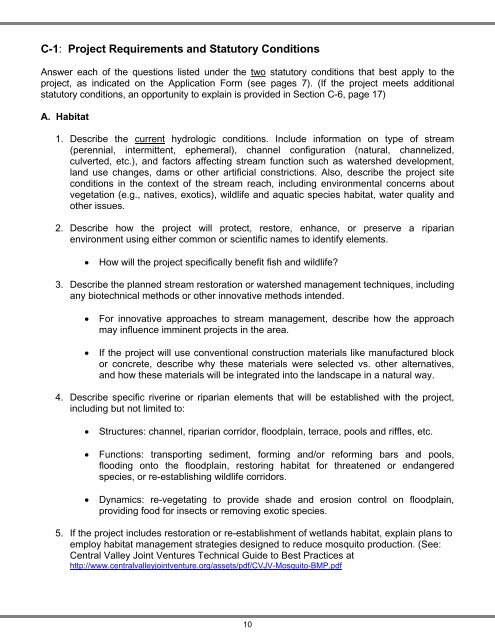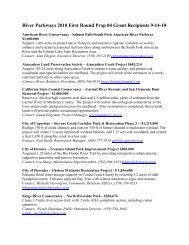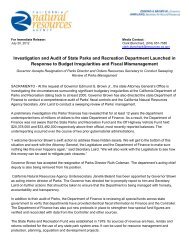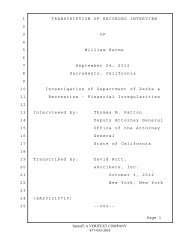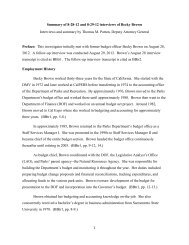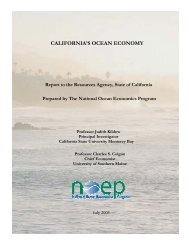california river parkways grant program - California Resources Agency
california river parkways grant program - California Resources Agency
california river parkways grant program - California Resources Agency
You also want an ePaper? Increase the reach of your titles
YUMPU automatically turns print PDFs into web optimized ePapers that Google loves.
C-1: Project Requirements and Statutory Conditions<br />
Answer each of the questions listed under the two statutory conditions that best apply to the<br />
project, as indicated on the Application Form (see pages 7). (If the project meets additional<br />
statutory conditions, an opportunity to explain is provided in Section C-6, page 17)<br />
A. Habitat<br />
1. Describe the current hydrologic conditions. Include information on type of stream<br />
(perennial, intermittent, ephemeral), channel configuration (natural, channelized,<br />
culverted, etc.), and factors affecting stream function such as watershed development,<br />
land use changes, dams or other artificial constrictions. Also, describe the project site<br />
conditions in the context of the stream reach, including environmental concerns about<br />
vegetation (e.g., natives, exotics), wildlife and aquatic species habitat, water quality and<br />
other issues.<br />
2. Describe how the project will protect, restore, enhance, or preserve a riparian<br />
environment using either common or scientific names to identify elements.<br />
• How will the project specifically benefit fish and wildlife?<br />
3. Describe the planned stream restoration or watershed management techniques, including<br />
any biotechnical methods or other innovative methods intended.<br />
• For innovative approaches to stream management, describe how the approach<br />
may influence imminent projects in the area.<br />
• If the project will use conventional construction materials like manufactured block<br />
or concrete, describe why these materials were selected vs. other alternatives,<br />
and how these materials will be integrated into the landscape in a natural way.<br />
4. Describe specific <strong>river</strong>ine or riparian elements that will be established with the project,<br />
including but not limited to:<br />
• Structures: channel, riparian corridor, floodplain, terrace, pools and riffles, etc.<br />
• Functions: transporting sediment, forming and/or reforming bars and pools,<br />
flooding onto the floodplain, restoring habitat for threatened or endangered<br />
species, or re-establishing wildlife corridors.<br />
• Dynamics: re-vegetating to provide shade and erosion control on floodplain,<br />
providing food for insects or removing exotic species.<br />
5. If the project includes restoration or re-establishment of wetlands habitat, explain plans to<br />
employ habitat management strategies designed to reduce mosquito production. (See:<br />
Central Valley Joint Ventures Technical Guide to Best Practices at<br />
http://www.centralvalleyjointventure.org/assets/pdf/CVJV-Mosquito-BMP.pdf<br />
10


